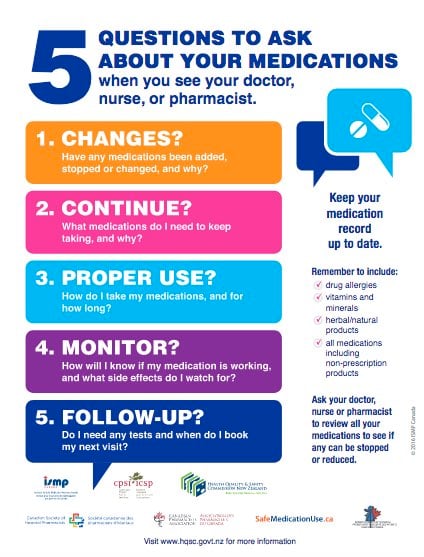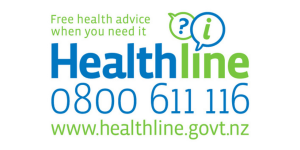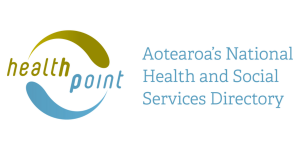Wishing everyone a safe and happy Christmas and New Year – Meri Kirihimete from the Healthify team.
Vaccines and side effects
Key points about vaccines and side effects
- Vaccines are a type of medicine.
- Like all medicines, vaccines can cause side effects, although not everyone gets them.
- Find out about vaccine safety and possible side effects.

Vaccination is an important way to prevent you from serious illness from disease. Being vaccinated causes your body to produce antibodies against diseases. This means that if you're infected with a disease later, these antibodies are already in your bloodstream to fight off the disease quickly. Even if vaccinated people do get sick from the disease, they usually get a mild form of infection, recover faster and are less likely to have serious complications. Many diseases that vaccines prevent can cause serious illness, especially in children, these illnesses can be fatal. Read more about a range of vaccination topics.
Vaccines are medicines. Like all medicines vaccines can cause side effects, although not everyone gets them. The chance of getting side effects varies from person to person. Most reactions to vaccines are normal and show that your immune system is responding to the vaccine. Every vaccine has different reactions. At the appointment, your vaccinator will let you know what reactions to look out for. This will help you know what to expect. Here is some general guidance. Also find out more about vaccines in New Zealand.
Pain, swelling and/or redness at the injection site
This is a common side effect of vaccines and is your immune system’s natural response to the vaccine. This is expected and usually starts a few hours after getting the injection and settles within a few days. If it's uncomfortable, you can reduce the pain or swelling by placing a cold, wet cloth or ice pack where the injection was given. Leave it on for a short time. Don't rub the injection site. Tell your healthcare provider if it bothers you.
Fever or aching muscles
This is a common side effect of vaccines and is your immune system’s natural response to the vaccine. This is expected and usually starts a few hours after getting the injection and settles within a few days. Some vaccines, such as the measles, mumps and rubella (MMR) vaccine, can cause a delayed reaction. This could be a high fever (over 39°C) between 6 and 12 days after immunisation and temporary joint pain 2 to 4 weeks after immunisation. To ease the fever you can dress lightly, with a single layer of clothing, keep the room cool, use a fan and drink plenty of fluids. Because paracetamol or ibuprofen can interfere with your immune response to a vaccine, only take them for relief of significant discomfort or high fever.
Skin rash
Some people may get a skin rash after vaccinations. Often the rash is mild and goes away in a few days. The measles, mumps and rubella (MMR) vaccine can cause a skin rash between 6 and 12 days after vaccination. Similarly, the chickenpox vaccine can cause a mild rash between 5 and 26 days after vaccination. If you are concerned about a rash, contact your healthcare provider.
Allergic reaction
It's rare to have a serious reaction following a vaccination. About 1 in 1 million people may experience a severe allergic reaction called anaphylaxis. This is why you are asked to wait for 15 to 20 minutes after vaccination, so trained nurses can immediately treat the allergic reaction. Treatment is very fast and effective.
If you have concerns about a reaction after a vaccination, talk to your healthcare provider or call Healthline (0800 611 116).
Symptoms of an allergic reaction include:
- wheezing, shortness of breath or difficulty breathing
- itchy swellings on your skin (called hives or nettle rash)
- swelling of your face, lips, tongue which may cause swallowing or breathing problems
- swelling of other parts of your body.
Before a vaccine is ever recommended for public use, it undergoes a lot of testing, both in labs and in volunteers. These tests answer important questions, such as the following:
- Is the vaccine safe?
- What dose (amount) works best?
- How does the immune system react to it?
In Aotearoa New Zealand, before vaccines are used in the community they must be approved by Medsafe, the New Zealand Medicines and Medical Devices Safety Authority. Medsafe only gives consent for a vaccine to be used once they are satisfied it’s safe and effective enough to use.
Once a vaccine is approved, health experts continue to monitor the vaccine’s safety and effectiveness. Suspected side effects to vaccines are reported to the Centre for Adverse Reactions Monitoring (CARM), based at the University of Otago in Dunedin.
The purpose of monitoring is to watch for adverse events (possible side effects). Monitoring a vaccine after it is approved and in use helps ensure that possible risks associated with the vaccine are identified. Read more about the vaccine safety monitoring process(external link).
The safety of vaccines is often a topic of media stories and blog postings, but the information is not always accurate. Knowing where to get credible and reliable information is important. In Aotearoa New Zealand, the trusted sources of information about vaccines include:
- Medsafe(external link)
- Health New Zealand | Te Whatu Ora(external link)
- Healthify He Puna Waiora, NZ
- your healthcare provider.
Knowing the facts can help you feel more confident about making sure you and your family/whānau have all your vaccinations. Read more about vaccines in New Zealand.
All ingredients of vaccines play a necessary role. This may be to trigger your body to develop immunity or to ensure that the final product is stable, safe and effective.
The following are some common ingredients:
- Adjuvants – these help boost your body’s response to the vaccine. Adjuvants are also found in other types of medicines and products such as antacids, buffered aspirin, antiperspirants, etc.
- Stabilisers – these help keep the vaccine effective after it has been manufactured. Stabilisers are also found in foods such as jelly. They also naturally occur in your body.
- Formaldehyde – this is used to prevent contamination by bacteria during the vaccine manufacturing process. It also resides in your body naturally, more so than in vaccines. Formaldehyde is also found in the environment, preservatives and some household products.
- Thimerosal – this is also used during the manufacturing process, but is no longer an ingredient in any vaccine except multi-dose vials of the flu vaccine. Single dose vials of the flu vaccine are now available as an alternative. No reputable scientific studies have found an association between thimerosal in vaccines and autism.
There are no traces of peanut, tree nuts, wheat, soy seeds or seafood in vaccines. Chicken and egg products are used in the manufacture of the MMR vaccine and some flu vaccines, but they are safe to use even if you have an egg allergy. The yellow fever vaccine is the only vaccine that is not safe in people with an egg allergy.
It is important to let your doctor, pharmacist or nurse know about side effects to any vaccine that you or your child may have. Reporting side effects helps protect everyone’s health. Read more about reporting side effects.
Brochures
Medicines and side effects(external link) Healthify He Puna Waiora, NZ, 2024
5 questions to ask about your medications(external link) Health Quality and Safety Commission, NZ, 2019 te reo Māori(external link)
References
- Making the vaccine decision: addressing common concerns(external link) Centers for Disease Control and Prevention (CDC), US
- Vaccines and egg allergy(external link) Allergy NZ
- Yellow fever vaccine(external link) NZ Formulary
Brochures

Medicines and side effects
Healthify He Puna Waiora, NZ, 2024

Health Quality and Safety Commission, NZ, 2019 English, te reo Māori
Credits: Sandra Ponen, Pharmacist, Healthify He Puna Waiora. Healthify is brought to you by Health Navigator Charitable Trust.
Reviewed by: Angela Lambie, Pharmacist, Auckland
Last reviewed:





